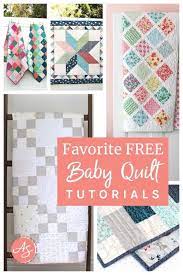Exploring the Vibrant Swap Meet Scene on Oahu
Exploring the Swap Meet on Oahu
If you’re looking for a unique shopping experience in Hawaii, the swap meet on Oahu is a must-visit destination. Held at the Aloha Stadium in Honolulu, this bustling marketplace offers a wide variety of goods, from local crafts and souvenirs to fresh produce and clothing.
One of the highlights of the swap meet is the opportunity to interact with local vendors who showcase their handmade items and traditional Hawaiian products. You can find beautifully crafted leis, unique jewelry pieces, colorful aloha shirts, and other authentic Hawaiian treasures that make for perfect souvenirs or gifts.
In addition to shopping, the swap meet is also a great place to sample delicious local snacks and dishes. From freshly cut tropical fruits to savory plate lunches, there’s no shortage of tasty treats to enjoy while exploring the stalls.
Visitors can also immerse themselves in Hawaiian culture by watching live performances of hula dancing or listening to traditional music played by local musicians. The vibrant atmosphere of the swap meet truly captures the spirit of aloha and offers a glimpse into the rich cultural heritage of Hawaii.
Whether you’re looking for unique souvenirs, delicious food, or an authentic cultural experience, the swap meet on Oahu is a must-visit destination for anyone exploring the island. So grab your shopping bag and get ready to discover the treasures that await you at this bustling marketplace!
5 Essential Tips for Navigating Oahu’s Swap Meets
- Check the schedule for upcoming swap meets on Oahu.
- Arrive early for the best selection of items at the swap meet.
- Bring cash as some vendors may not accept credit cards.
- Don’t be afraid to negotiate prices with vendors at the swap meet.
- Wear comfortable shoes and stay hydrated while exploring the swap meet.
Check the schedule for upcoming swap meets on Oahu.
To make the most of your visit to the swap meet on Oahu, be sure to check the schedule for upcoming events. By staying informed about the dates and times of the swap meets, you can plan your visit accordingly and ensure that you don’t miss out on any exciting vendors or activities. Checking the schedule in advance will help you make the most of your time at the swap meet and allow you to fully immerse yourself in this vibrant marketplace experience.
Arrive early for the best selection of items at the swap meet.
For the best selection of items at the swap meet on Oahu, it is recommended to arrive early. By getting there in the morning, you can beat the crowds and have first pick of the unique crafts, souvenirs, and local goods that vendors have to offer. Early birds often have the advantage of finding hidden gems and one-of-a-kind treasures before they get picked over. So set your alarm clock, grab your shopping bag, and make the most of your swap meet experience by arriving bright and early to explore all that this vibrant marketplace has to offer.
Bring cash as some vendors may not accept credit cards.
When visiting the swap meet on Oahu, it’s important to remember to bring cash as some vendors may not accept credit cards. Having cash on hand ensures that you can easily make purchases and enjoy the shopping experience without any inconvenience. By being prepared with cash, you can explore the diverse array of goods and support local vendors by purchasing their unique products hassle-free.
Don’t be afraid to negotiate prices with vendors at the swap meet.
When visiting the swap meet on Oahu, it’s important not to be afraid to negotiate prices with vendors. Bargaining is a common practice at markets like these, and vendors often expect customers to engage in friendly haggling. By negotiating prices, you may be able to secure a better deal on the items you’re interested in purchasing. Remember to approach negotiations respectfully and with a positive attitude, as it can lead to a more enjoyable shopping experience and potentially save you some money.
Wear comfortable shoes and stay hydrated while exploring the swap meet.
When exploring the swap meet on Oahu, it’s essential to wear comfortable shoes and stay hydrated throughout your visit. With so much to see and explore, comfortable footwear will ensure that you can navigate the marketplace without any discomfort. Additionally, staying hydrated is crucial in the warm Hawaiian climate, especially when spending time outdoors browsing through stalls and enjoying the local offerings. By taking care of your feet and staying hydrated, you can fully enjoy all that the swap meet has to offer while keeping yourself comfortable and energized.
